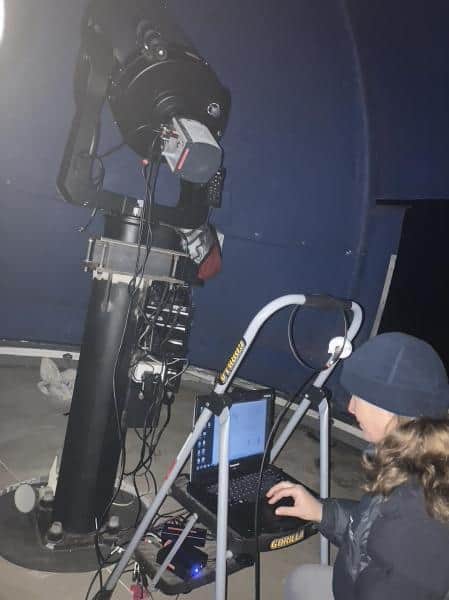PSI Senior Scientist Amanda Sickafoose traveled to Australia to observe a stellar occultation by Pluto. But sometimes weather can get in the way of science.
Sickafoose traveled to Alice Springs with her colleague Stephen Levine from Lowell Observatory. They used a 14-inch Meade telescope at the Earth Sanctuary with an instrument that she carried to the site (POETS, a Portable Occultation, Eclipse, and Transit System).
“Unfortunately, the weather in Alice Springs was overcast and rainy during our visit. During both the practice runs and the night of the occultation, we were unable to take any data of Pluto,” Sickafoose said. “However, there were other teams in our group – and other groups – based at different sites in Australia who were successful. We have collectively managed to obtain enough data to meet our science goal. Stay tuned for the publication.”
As the 13th magnitude occultation star (Gaia DR2 6852184815383389824) was occulted by a 14th magnitude Pluto, the main observational result is the joint star/Pluto light dimming by approximately 80% and then brightening again. The maximum expected duration for this event was approximately 3 minutes at the center of the shadow, and shorter as one approaches the limbs.
“The primary goal of the observations was to measure Pluto’s microbar-level atmosphere to determine how it is evolving with time. Some thermophysical models predict that the atmosphere could freeze out as Pluto moves away from the Sun in its orbit. Indeed, occultation observations over the past few years indicate that the atmospheric expansion observed since the late 1980s has halted. The best way to measure Pluto’s atmospheric size and pressure, short of sending another spacecraft, is to observe stellar occultations.” Sickafoose said.

